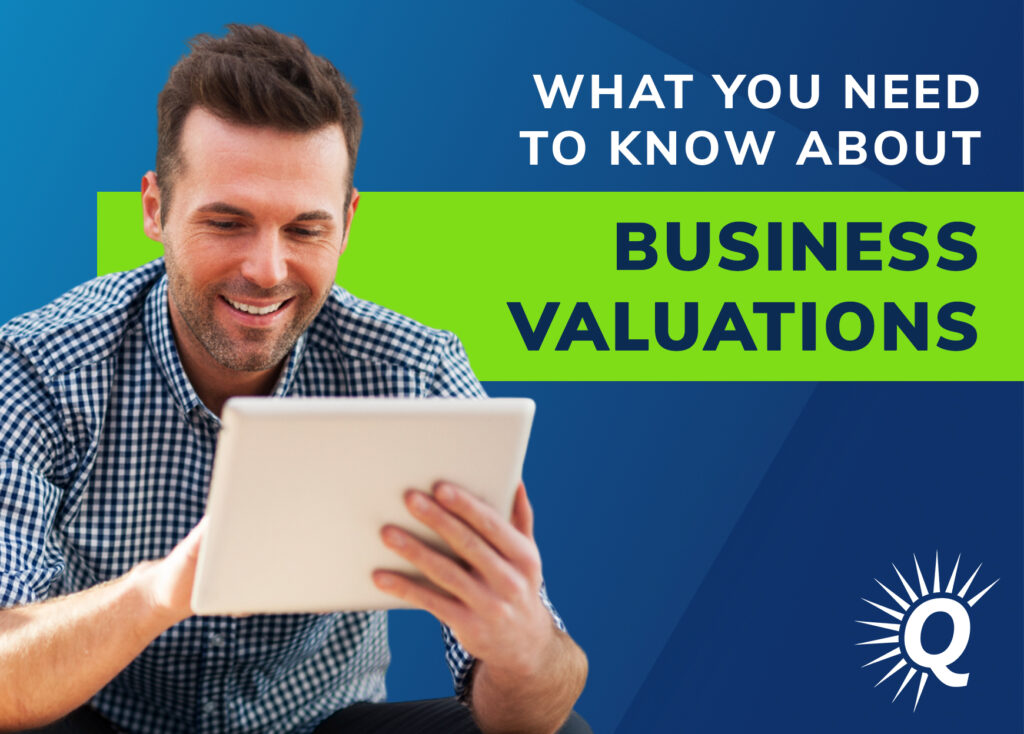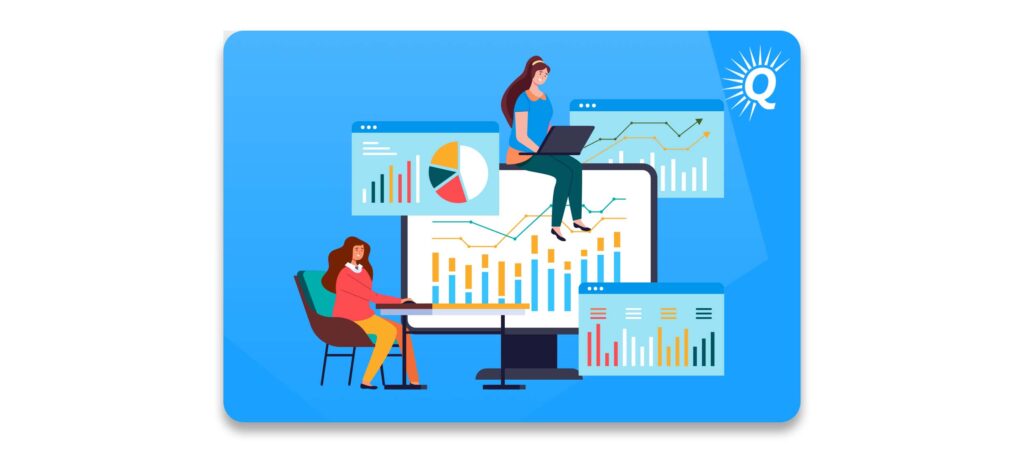Topics:
Never Miss a Beat - Get Updates Direct to Your Inbox
FILTER:


How Business Valuations Work and Why They’re Important
By Ian Drogin
Professional business valuations can provide you with enormous insight into the health of your business. Not only does the valuation process establish your business’s worth, but it also enables you to identify high-leverage opportunities to improve performance and maximize value.
In this article, we discuss:
- The different business valuation methods available
- How your business’s value is ultimately determined
- What the process of getting a business valuation really looks like
- Why business valuations are important


Understanding the Different Valuation Methods
Not surprisingly, different business valuation methods can lead to significantly different figures of a business’s worth. So, what are the different approaches to business valuation and how do they differ? Below, we summarize the most common ways for determining a business’s value.
Market capitalization business valuation method
The formula for market capitalization is pretty straightforward, but it only applies to publicly traded companies. To determine company valuation using market capitalization, you simply multiply the current stock price by the total number of shares. For example, if a company’s stock price is $100 and there are 50,000 shares, the market capitalization is $50,000,000 ($100 X 500K = $50M).
Of course, it’s impossible to apply this method to smaller, privately owned businesses that aren’t publicly traded.
Discounted cash flow business valuation method
The discounted cash flow method calculates a business’s value based on the time value of its expected future cash flows. In other words, it estimates the total amount of money a business should generate in the future and then discounts those earnings based on the time value of money.
One significant downside of the discounted cash flow method is that it’s nearly impossible to determine how much profit a business will generate in the foreseeable future. Similar to the market capitalization method, discounted cash flow isn’t typically used for most online business valuations.
Book value
A business’s book value is an asset-based valuation method that adds up the total value of its assets and then subtracts the value of its liabilities.
Although determining a business’s book value is relatively straightforward (assuming the business has effective bookkeeping practices), it fails to account for the business’s future earning potential. And of course, earning potential is one of the primary reasons investors choose to acquire online businesses. This makes book value an unpopular valuation method for profitable online businesses.


Times-revenue method business valuation method
The times-revenue method calculates a business’s value by multiplying its annual revenue by a figure known as the multiple. For example, if a business’s revenue is $1,000,000 and it’s valued at a 3x revenue multiple, its total value is $3,000,000 ($1M X 3 = $3M).
Because the times-revenue method uses revenue rather than earnings, it fails to accurately account for a business’s profitability. Therefore, it’s rarely used for smaller online businesses. It can be a viable valuation method, however, for quickly growing businesses that reinvest the majority of their profits into growth activities. For example, SaaS businesses that generate more than $1,000,000 in revenue are often valued using the times-revenue method because it’s assumed that most of the business’s profits are being reinvested into acquisition activities.
Liquidation value
As the term implies, the liquidation value is the total value a business would yield if you were to sell all assets.
A business’s liquidation value provides little if any indication of its ability to generate revenue and profit. Therefore, it isn’t typically used for online business acquisitions. Generally, it’s reserved for situations in which a company is going out of business.
Seller’s discretionary earnings (SDE) multiple method
The seller’s discretionary earnings (SDE) multiple method is similar to the times-multiple method except it uses SDE instead of revenue. We’ll go into much more detail about this method in the following section.
Thinking of Selling Your Business?
Get a free, individually-tailored valuation and business-readiness assessment. Sell when you're ready. Not a minute before.
What Valuation Method Is Best for Your Online Business?
Most online businesses are valued based on a multiple of the seller’s discretionary earnings. This is because a business’s current earnings are generally the most accurate predictor of its future performance, making it the best valuation method available for online businesses.
To determine a business’s value using the SDE multiple method, you first need to establish its SDE.
What are seller’s discretionary earnings?
SDE is a business’s pretax and pre-interest profits taken before one-time investments, owner’s compensation, noncash expenses, and any unrelated income or expenses. In other words, it’s the amount of money a business generates for an individual owner.
To determine your SDE, you must first create an add-back schedule in which you “add back” the various expenses mentioned above. This illustrates one of the main benefits of using SDE: it’s intended to eliminate expenses that won’t necessarily transfer to a new owner, thereby presenting a more accurate picture of the business’s money-earning performance.
Once you establish the SDE, you then multiply it by the multiple to determine business value.


What determines the multiple?
For those who don’t understand the nuances of business valuation, the multiple may seem like an arbitrary number. Why do you value some businesses at a 2x multiple while others at 5x? Obviously, the multiple has a significant impact on your business’s value.
There are numerous elements that determine your multiple, but all of these fall into one of four different categories. We call these the Four Pillars of Value. These pillars include risk, growth, transferability, and documentation.
Risk decreases the value of your business
If your business is fraught with risk, buyers won’t be willing to pay as much. Why would someone invest in an asset that is likely going to collapse in the near future?
One key element that contributes to risk is single points of failure. For example, if you have an ecommerce business that relies on a single supplier for all of your products, your business faces considerable risk. If that supplier dramatically raises their prices or goes out of business, you could be in trouble.
Blogs and content sites can experience similar risks. If your website generates 95 percent of its revenue through one affiliate offer on a single page, that could be concerning. If that page stops ranking well or the affiliate relationship ends your business could plummet.


To minimize risk and increase your business’s value, it’s important to eliminate as many single points of failure as possible. Not only will buyers be willing to pay more, but you’ll also get to enjoy a stabler business while you’re still the owner.
Other risk factors can include a lack of defensibility, market instability, and IP or legal concerns.
Strong growth trends increase your business’s value
Every investor likes the idea of acquiring assets that will continue to grow in value and profitability. Therefore, if your business has strong growth trends, buyers will be willing to pay more for it.
The main growth metric buyers pay attention to is SDE growth, although revenue growth is important as well. You want to show that your business isn’t just driving more sales but is also able to maintain a healthy profit margin as it scales.
To maximize your business’s value, it’s best to plan ahead and invest in high-growth activities before going to market. For most businesses, this might mean launching new products, expanding to new markets, improving your advertising ROI, or increasing conversion rates.
In addition to showing strong historical growth trends, it’s important to provide clear growth opportunities. In other words, you want to leave room for the next owner to grow the business after the acquisition.


Make sure your business is transferable
Even if your business is highly profitable, buyers are going to be wary if it can’t transfer to a new owner. Therefore, make sure to build your business with transferability in mind.
To build a transferable business, it’s essential that you’re able to hand off your role and responsibilities to others. In many cases, it makes sense to hire employees or contractors who can handle the majority of operations. Also, it’s always a good idea to create standard operating procedures (SOPs) that detail how your business operates. Think of it as a sort of “owner’s manual” to provide your buyer with guidance once they take over.
Documentation is key
The fourth Pillar of Value is documentation. Part of documentation includes how well you’ve maintained business records. Invoices, inventory reports, advertising reports, and supplier contracts are all part of documentation. In general, it’s best to have clear and effective practices for keeping track of all such documents.
Documentation also refers to your accounting and bookkeeping practices. When selling your business, smart buyers are going to want to look at the nitty-gritty details of your business’s performance. Key elements such as growth trends and seasonality are only understood by looking at a sound financial statement. The clearer and more organized your documentation practices are, the more valuable your business will be.


What Do You Need to Perform a Business Valuation?
During the business valuation process, your Advisor will examine many different elements to determine its value. Your Advisor will let you know what specific information you need to provide based on your business, but two critical items include your business’s profit and loss statements and balance sheet.
It’s important to note that you should be able to provide financial statements using accrual accounting. Without accrual accounting, it’s impossible to understand the trends and seasonality within your business. If you’re not using accrual accounting, this is one of the first things your Advisor will speak with you about.
Additionally, your Advisor will ask several key questions to gain a complete understanding of your small business, as well as the market in which it operates.
Buy a Profitable Online Business
Outsmart the startup game and check out our listings. You can request a summary on any business without any further obligation.
How Much Do Business Valuations Cost?
At Quiet Light, we provide business valuations for free. Additionally, you’ll never experience any pressure from us to sell your business. It’s your asset and you should do whatever you feel is best. Our goal is simply to help you understand your options so you can make the best decision possible.
What Are the Benefits of Getting a Business Valuation?
The value of a business valuation goes far beyond the selling process. Yes, it is one of the first steps you take when preparing to sell, but it also provides you with enormous insight regardless of which path you choose.
When you get a business valuation, not only will your Advisor will help you understand your business’s current value, but they’ll also provide you with clear steps to help you increase its value moving forward if you’re not yet ready to sell. In many cases, this can help you shift your perspective so you can focus your efforts on the highest-leverage activities.
Thinking of Selling Your Business?
Get a free, individually-tailored valuation and business-readiness assessment. Sell when you're ready. Not a minute before.





